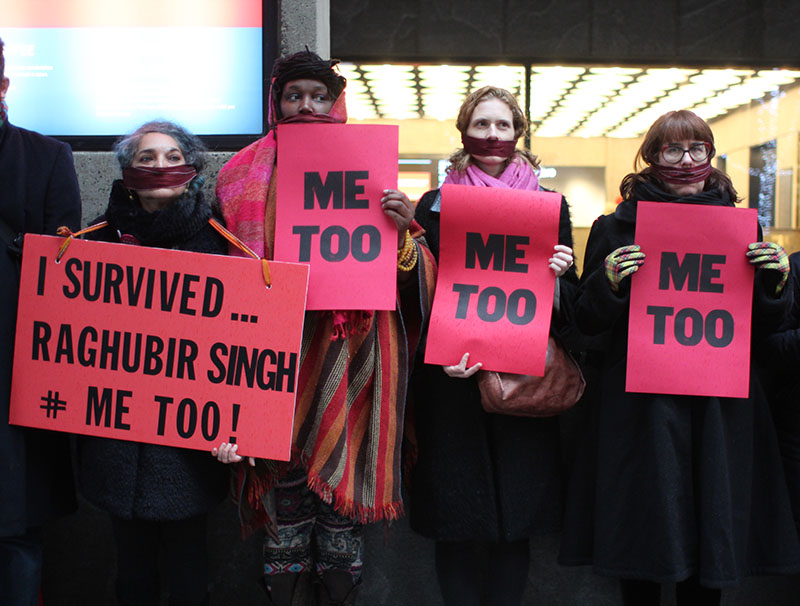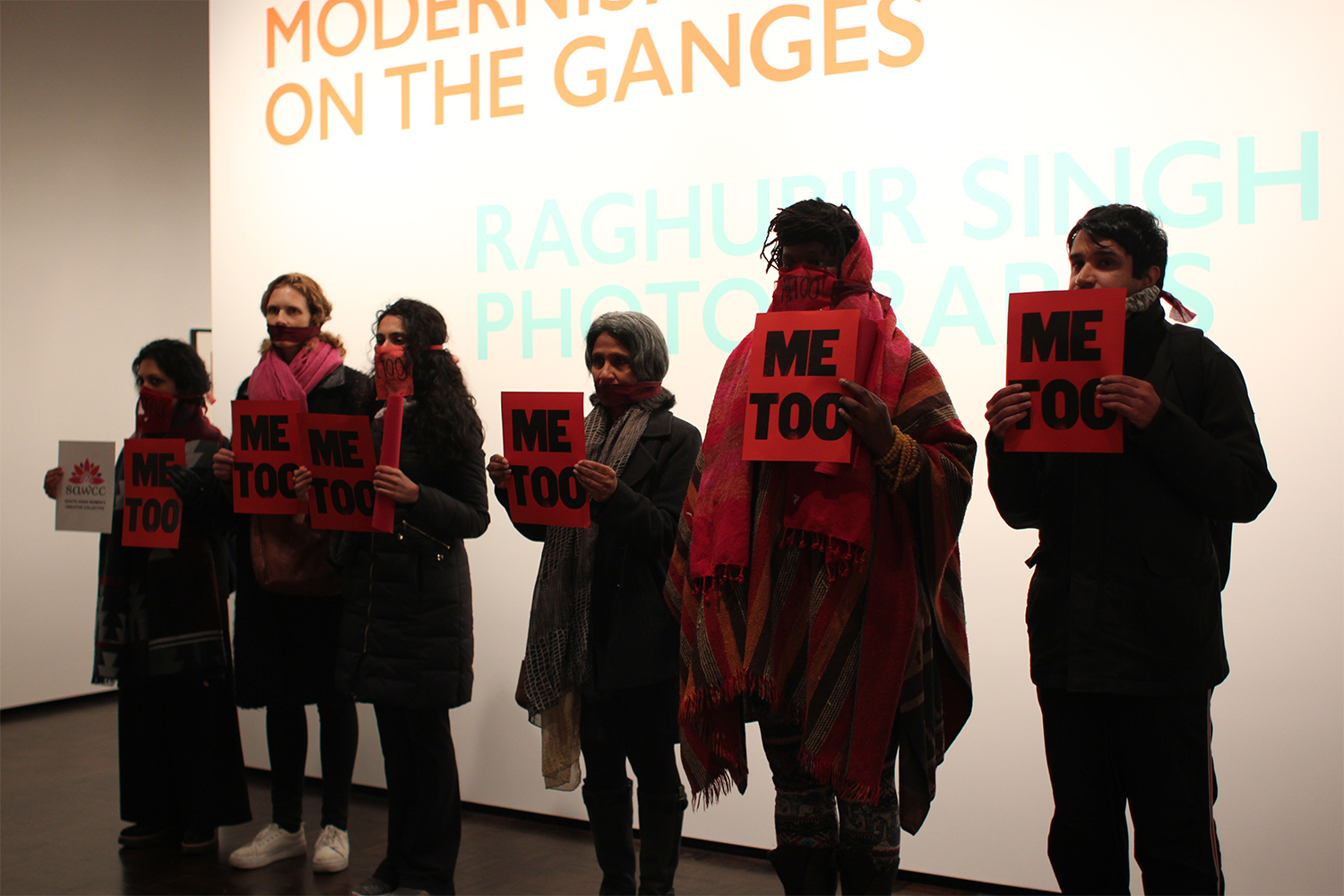ARTICLE
The Me Too Movement in Indian Art
Art institutions handled the allegations in different ways, often based on their relationship with the accused party and the positions they occupy in the respective organisations. Artists such as Gupta and Komu resigned from their offices in the Khoj International Artists Association and the Kochi Biennale Foundation, respectively, with the latter being removed as curator of the Young Subcontinent program at the Serendipity Arts Festival. Sharma ended his association with Clark House Initiative, and Gaurav Bhatia left his post at Sotheby’s. Exhibitions of the accused, such as Datawala’s Datura at TARQ, Mumbai, were closed down, and invitations to events were withdrawn.
On 21 December, a group of art practitioners — notably Rosalyn D’Mello, Natasha Ginwala, Dayanita Singh and Sumir Tagra — drafted a statement demanding safer and more reliable regulatory pathways for survivors of sexual harassment in the art world. The statement was later digitally signed by hundreds of artists and other practitioners.
Soon after the allegations against Komu, the Kochi Biennale Foundation (KBF) consulted with cyber forensics experts to attempt to discover the identity of those running Scene and Herd, but dropped this line of investigation after outcry from the Indian art community. After Komu stepped down from his posts at the Foundation, the KBF set up an Internal Complaints Committee, asking victims to step forward and lodge formal complaints. However, no complaints were received and Komu was offered his post back in January 2019, but he declined. In September 2019, Subodh Gupta filed a defamation lawsuit in the Delhi High Court against Scene and Herd, demanding financial compensation of INR 5 crores as well as a public disclosure of the account user’s identity. The court passed an order asking Facebook to remove the posts naming Gupta from Instagram and receive the account holder’s identity in a sealed envelope. The case ended in early February 2020, when the court allowed the account to retain its anonymity while keeping the defamatory posts off Instagram.
The Me Too movement highlighted several key issues — the value of anonymity in building confidence among victims; the lack of redressal systems, such as internal complaints committees, in the art world; and the complicity of the art world, driven by the success of high-value artists. Several organisations have since established clearer policies on sexual harassment, including zero-tolerance and safe-space assurances.
Bibliography
Deodhar, Neerja. “#MeToo in India: Kiran Nagarkar, Pablo Bartholomew Named in Accusations; Photographer Responds with Statement.” Firstpost, October 12, 2018. https://www.firstpost.com/india/metoo-in-india-kiran-nagarkar-pablo-bartholomew-named-in-accusations-photographer-responds-with-statement-5329741.html.
D’Mello, Rosalyn. “Indian Art World’s #MeToo Reckoning: Forging an Equitable Future Demands a Sisterhood of Feminist Killjoys.” Firstpost, October 29, 2019. https://www.firstpost.com/living/indian-art-worlds-metoo-reckoning-forging-an-equitable-future-demands-a-sisterhood-of-feminist-killjoys-7558961.html.
D’Mello, Rosalyn. “Indian Art World’s #MeToo Reckoning: Toxic Patriarchal Conditioning Must Be Dismantled for True Change.” Firstpost, October 26, 2019. https://www.firstpost.com/living/indian-art-worlds-metoo-reckoning-toxic-patriarchal-conditioning-must-be-dismantled-for-true-change-7547871.html.
Fernando, Benita. “Time’s Up for Picasso.” Livemint, October 29, 2018. https://www.livemint.com/Leisure/cwQAziskoLZXcicmhcED4H/Times-up-for-Picasso.html.
Firstpost. “#MeToo: South Asian Art Community Issues Statement About Creating Safe Spaces to Report Harassment,” December 22, 2018. https://www.firstpost.com/india/metoo-south-asian-art-community-issues-statement-about-creating-safe-spaces-to-report-harassment-5776031.html.
Frank, Priscilla. “Artist Stages Protest at Met Breuer Where Her Alleged Abuser’s Work is on View.” HuffPost, December 06, 2017. https://www.huffpost.com/entry/raghubir-singh-protest-me-too_n_5a21dce3e4b03350e0b6d61f.
Mandhani, Apoorva. “What Artist Subodh Gupta’s Case Against Anonymous #MeToo Posts Achieved — and Didn’t.” The Print, February 21, 2020. https://theprint.in/india/what-artist-subodh-guptas-case-against-anonymous-metoo-posts-achieved-and-didnt/368411/.
Ohlheiser, Abby. “The Woman Behind ‘Me Too’ Knew the Power of the Phrase When She Created It — 10 Years Ago.” The Washington Post, October 19, 2017. https://www.washingtonpost.com/news/the-intersect/wp/2017/10/19/the-woman-behind-me-too-knew-the-power-of-the-phrase-when-she-created-it-10-years-ago/.
The Economic Times. “#MeToo: Artist Subodh Gupta Accused of Repeated Sexual Misconduct in Instagram Post,” December 13, 2018. https://economictimes.indiatimes.com/magazines/panache/metoo-artist-subodh-gupta-accused-of-repeated-sexual-misconduct-through-instagram-post/articleshow/67077198.cms.
The Hindu. “Riyas Komu Severs Ties with KBF,” March 20, 2019. https://www.thehindu.com/news/national/kerala/riyas-komu-severs-ties-with-kbf/article26593949.ece.
The New Indian Express. “#MeToo Allegation on Riyas Komu: Biennale Foundation Consults Cyber Experts,” December 02, 2018. https://www.newindianexpress.com/states/kerala/2018/dec/03/metoo-allegation-biennale-consults-cyber-experts-1906388.html.
The Times of India. “Sex Scandal Rocks Law Campus,” November 20, 2005. https://timesofindia.indiatimes.com/city/ahmedabad/sex-scandal-rocks-law-campus/articleshow/1301918.cms.








